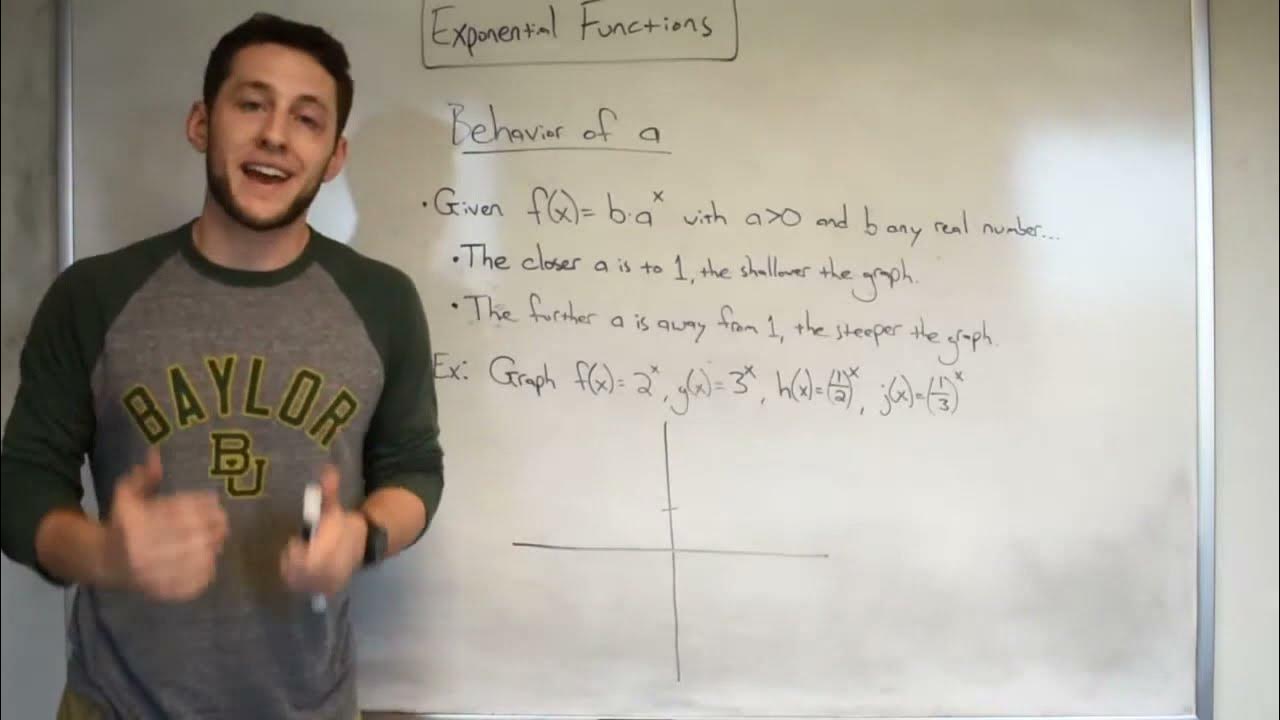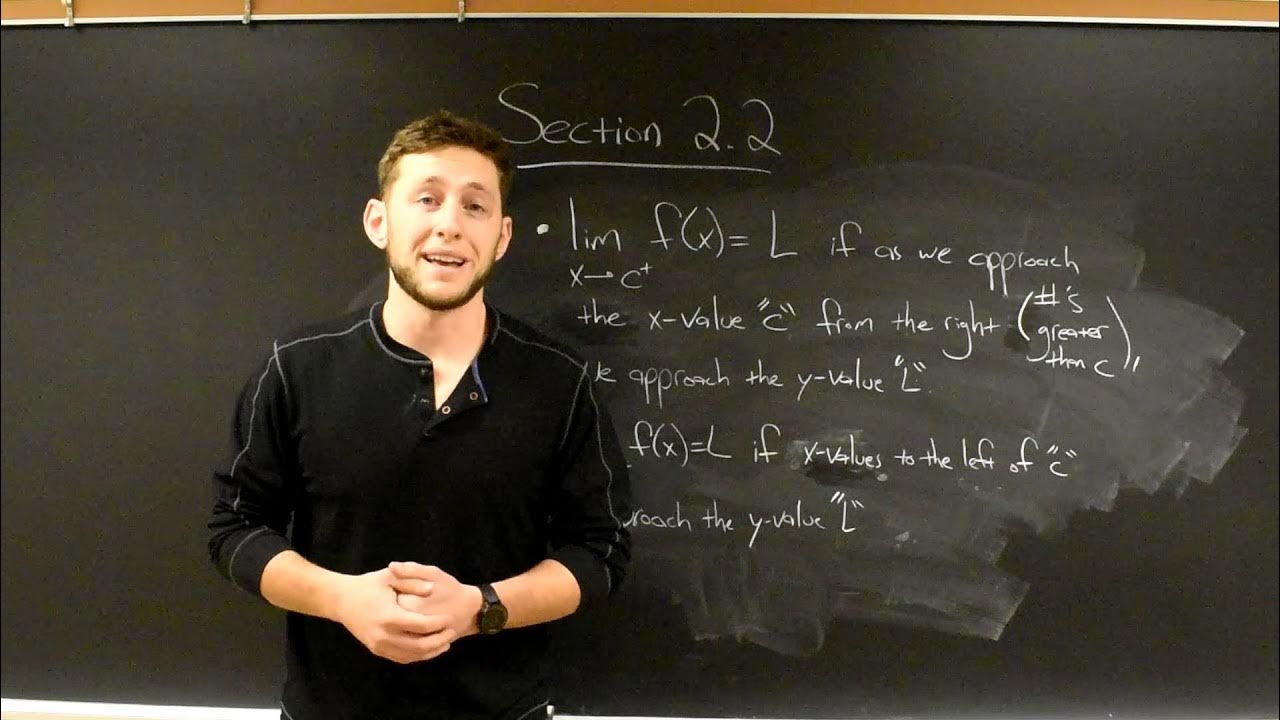The Weird Graph of y = x^x
TLDRThis educational video delves into the peculiarities of the graph for the function y = x^x, using desmos.com as a tool for visualization. The video addresses why the graph is continuous on the right side, where any positive x value yields real outputs, and discontinuous on the left, due to the emergence of imaginary numbers for certain negative x values. It also explains the conditions under which negative and positive values appear on the left side, relating to the properties of fractional exponents and even/odd roots. The presenter encourages viewers to explore mathematical concepts further through additional resources provided in the description.
Takeaways
- 📈 The video discusses the peculiar graph of the function y = x^x, which can be plotted using an online graphing calculator like Desmos.
- 🖥️ It's recommended to use a large monitor when graphing complex functions to avoid issues with viewing the entire graph on smaller screens.
- 🔍 The video raises questions about why some values are positive or negative and the discontinuity of the graph on the left side of the y-axis.
- 🔢 On the right side of the graph, the function is continuous because any positive value of x results in a real, positive output (e.g., 1^1 = 1, 2^2 = 4, 3^3 = 27).
- ❌ The function is discontinuous on the left side because plugging in negative values can result in imaginary numbers, not real numbers, due to even fractional exponents.
- 🔄 To understand negative exponents, they are converted to positive by moving the base to the denominator and then taking the appropriate root.
- 🤔 The video explains that an error occurs with negative bases and fractional exponents because even roots of negative numbers yield imaginary results.
- 👆 However, not all negative bases result in imaginary numbers; odd roots of negative numbers produce real numbers, which explains some negative outputs.
- 👇 The video also demonstrates how certain negative bases can yield positive results when the fractional exponent's numerator is even and the denominator is odd.
- 📚 The script concludes by summarizing the reasons for continuity on the right, discontinuity on the left, and the occurrence of both positive and negative values.
- 📺 The video aims to be educational and invites viewers to subscribe for more content on mathematical and other interesting topics.
Q & A
What is the function being discussed in the video?
-The function being discussed in the video is y = x raised to the power of x.
Why is it recommended to use a large monitor when graphing the function on desmos.com?
-It is recommended to use a large monitor because when the screen is minimized, the website only shows the upper portion of the graph and not the lower portion.
Why are some values positive and others negative on the left side of the y-axis in the graph?
-Some values are positive and others negative on the left side of the y-axis because when a negative number is raised to a non-integer power, it can result in both real and imaginary numbers. Real numbers can be either positive or negative.
Why is the graph discontinuous on the left side but continuous on the right side?
-The graph is discontinuous on the left side because for certain negative values, the function results in imaginary numbers, which are not real numbers. On the right side, any positive value for x will always yield a real number, making it continuous.
What happens when you try to calculate a negative number raised to a negative fractional power?
-When a negative number is raised to a negative fractional power, it results in an error because it requires taking an even root of a negative number, which leads to an imaginary number.
Why do we get an imaginary number when we calculate negative 0.1 raised to the power of negative 0.1?
-We get an imaginary number because it involves taking the tenth root of negative 0.1, which is an even root of a negative number, and even roots of negative numbers are imaginary.
Under what conditions do we get a real number when plugging in a negative value for x in the function?
-We get a real number when the fractional exponent is odd, as odd roots of negative numbers are real, or when the numerator of the fraction (after converting the decimal to a fraction) is even, which can turn the negative base positive.
What is the result of plugging in negative 0.2 raised to the power of negative 0.2?
-The result is a real number, approximately -1.3797, because the fifth root of a negative number (odd root) is a real number.
Why do some values on the left side of the graph end up being above the x-axis?
-Some values are above the x-axis because when the fractional exponent is converted into a radical, if the numerator of the resulting fraction is even and the denominator is odd, the result is a positive number.
How does the video explain the difference between positive and negative results for negative values of x?
-The video explains that the difference is due to the nature of the fractional exponent. If the exponent results in an odd root of a negative number, it yields a real negative value. If the exponent is such that the numerator of the fraction is even, it can yield a positive result.
Outlines
📈 Understanding the Graph of y = x^x
This paragraph introduces the concept of graphing the function y = x^x using an online graphing calculator like Desmos. It raises questions about the graph's behavior, such as why some values are positive or negative and why the graph is discontinuous on the left side but continuous on the right. The explanation begins with the observation that for positive x values, the function outputs real numbers, while for negative x values, the function may produce imaginary numbers, leading to discontinuity. The paragraph also touches on the fact that not all negative x values result in imaginary numbers, providing examples where real numbers, both positive and negative, are obtained.
🔍 Deep Dive into the Discontinuity and Values of y = x^x
The second paragraph delves deeper into the reasons behind the discontinuity and the positive and negative values observed on the graph of y = x^x. It explains that the graph is continuous on the right side because any positive value of x results in a real number output. Conversely, discontinuity on the left side occurs due to the potential for imaginary numbers when negative values are raised to fractional powers with even denominators. The paragraph further explores how certain negative values can yield positive results by converting decimals to fractions with even numerators and odd denominators, which, when raised to fractional powers,翻转 the negative base to a positive result. The summary concludes by reiterating the reasons for the graph's characteristics and encouraging viewers to explore more mathematical topics through linked resources.
Mindmap
Keywords
💡Graph
💡Function y = x^x
💡Desmos.com
💡Continuity
💡Discontinuity
💡Imaginary Number
💡Trigonometric Functions
💡Exponent
💡Fractional Exponent
💡Root
💡Positive and Negative Values
Highlights
The video discusses the peculiar graph of y = x^x and its behavior.
Desmos.com is introduced as an online graphing calculator for various functions.
The focus is on the function x^x and its unique graph.
A tip is given for using a large monitor to view the entire graph on Desmos.
Questions are posed about the positive and negative values and discontinuity of the graph.
The graph is continuous on the right side for any positive x value.
Discontinuity on the left side is due to the inability to raise negative numbers to negative powers without resulting in imaginary numbers.
An explanation of why negative x values result in imaginary numbers for even exponents.
Some negative x values yield real numbers when the exponent results in an odd root of a negative number.
Positive results for certain negative x values due to the conversion of decimals into fractions with even numerators and odd denominators.
The video provides a detailed explanation of how to convert decimal exponents into radical forms.
The importance of the index number being odd for obtaining real numbers from negative bases raised to negative powers.
The video recaps the reasons for continuity on the right and discontinuity on the left of the graph.
The video concludes with an invitation to watch more math-related and interesting videos.
A call to action for viewers to subscribe to the channel and turn on notifications.
Transcripts
5.0 / 5 (0 votes)
Thanks for rating:





